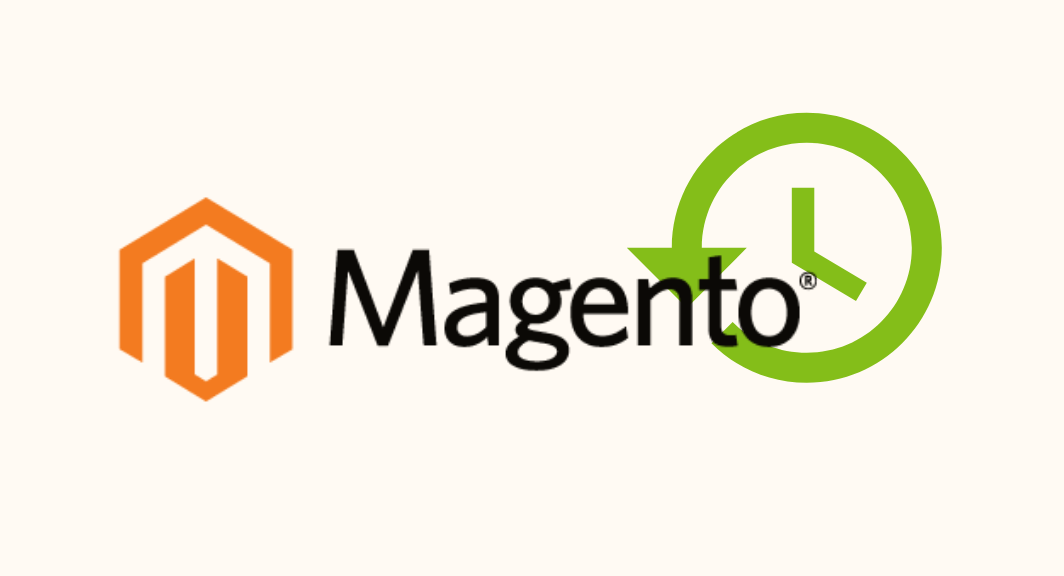 Craig Melville
| 13 February 2020 |
Craig Melville
| 13 February 2020 |
Magento 1 End of Life Survival Guide

Still on Magento 1? It’s time to leave. Now.
With Magento 1 reaching EOL in June 2020, you need to make sure that your site is smoothly up and running on another eCommerce platform as soon as possible. If you put it off any longer, you might find yourself in a tricky position later on in the year. Remember, this could significantly hinder (or even put a temporary halt) to your business.
So, why all the rush?
Well, whether you decide to go for Magento 2 or opt for a completely new provider (see our Magento v BigCommerce comparison), you’re going to have to go through the full re-platforming process. This will involve data migration, new themes, new templates, and a whole host of other things.
Needless to say, this is incredibly time-consuming, but it’s worth getting out of the way sooner rather than later.
So, let’s look at why you need to switch, how you can begin the transition, the steps you need to go through, and what lies in store if you don’t transition away from Magento 1 by June.
Tired of scrolling? Download as a PDF!
Why Does the Magento 1 End of Life Matter?
These days, we’re inundated with a constant stream of new updates across all our devices. As a result, you could perhaps be forgiven for thinking that the switch from Magento 1 to Magento 2 isn’t really that big of a deal.
But this isn’t the case.
Magento 2 promises some clear improvements on Magento 1, that’s not in doubt. You’ve probably already read about the likes of better site performance, the fact it is more mobile-friendly, and how it provides a slicker checkout experience. What you may also have read about is that it’s far from a simple upgrade.
The reality is that switching from Magento 1 to Magento 2 essentially requires a full re-platforming. Suffice to say, your themes won’t transfer, your M1 extensions won’t work on M2 (because the two have different architectures), and some of your data will have to be migrated manually. Sounds complicated doesn’t it?
That said, simply ignoring things and refusing to switch just isn’t an option. Here we’ll give you the main reasons why:
-
Your business will be at risk
Your site will no longer be supported by security updates after June 2020. So, while you’ll still be able to sell your goods through your Magento 1 site, you won’t be receiving any security patches. This will leave you unnecessarily exposed.
What that means from a business perspective is that your site and customer data is vulnerable to hackers. This isn’t a place you want to be. Consider the likes of hefty fines, a huge loss of reputation and problems your business might never recover from. Put simply, it’s not worth risking your business in this way.
-
Your payment provider may opt out
You need your payment provider to run your business and make sales. It’s as simple as that. At least one major payment provider has gone on record saying that they won’t be supporting merchants on Magento 1 after the end of life. It’s only a matter of time before other payment providers follow suit.
So, why are they taking this stance? The main reason is that your site won’t be PCI compliant anymore. If your site is unsecure, that’s an immediate risk for payment providers.
Losing your payment provider is just the first step. You’re also opening yourself up to significant fines. Then comes your business’ reputation.
-
You will lack mission-critical extensions
With Magento 1 no longer updating, many of your extensions to third-party systems will soon become obsolete and non-functional.
You may discover that the connections you rely on each and every day suddenly don’t work. How can you then run your business? The answer is you can’t.
-
Routine updates will take longer
If you’re adamant about sticking with Magento 1, things are about to get very tricky.
For example, you’re going to have to find a developer to support you with routine updates. When you do manage to find one, your updates will likely cost you a significant amount of time and money. Remember, it’s a much bigger job for a developer to create a security patch from scratch as opposed to just implementing one that exists already.
What was once simple, will soon become impossible.
Making the Switch
The prospect of re-platforming can often be a daunting task. The following steps should aid your approach at this stage.
-
Evaluate your current systems
You might be happy with your current store and feel like you’re only switching out of necessity. It’s still important to use this time as a good opportunity to audit your systems.
Spend some time speaking with your teams to get an understanding of what’s working and what isn’t from the people that use the platform every day. This will help build a picture of what your new platform requires and your potential wish-list of features.
-
Carefully select your new platform
Run through your priorities here and take your time to question what you really need as a business. Obviously as time is of the essence you need to get something in place quickly, but that doesn’t mean you should ignore the long-term requirements and future priorities of your business.
Remember, just because you were on Magento 1 previously doesn’t mean you need to be loyal. There are several options that make great alternatives including the likes of BigCommerce.
When creating your plan, narrow your search to a few top contenders before sending out an RFP with all of your needs clearly defined and prioritised.
Here we run you through exactly what you need to consider when choosing the right eCommerce platform for your business.
-
Site build and migration
Hopefully your new platform can provide resources to help with this part of the process. Given the short timeframe, this may be something you want to consider during the RFP process.
You can learn more about why the right Digital Commerce Partner can help your re-platforming efforts and drive business success for the future.
Final thoughts
With a well-thought-out plan, you can turn the end of Magento 1 from a negative into a positive. When selecting the right platform, you can quickly and cost-effectively scale your digital transformation efforts. This will therefore have a positive impact on your long-term growth for many years to come.
Rushing things and making the wrong selection opens you up to risk. Always do your due diligence and select the right platform for your current and future needs. Remember that constant re-platforming will do little for the stability and growth of your business moving forward.
Tired of scrolling? Download as a PDF using the form below!
hbspt.forms.create({
portalId: “1708587”,
formId: “442ac907-826d-4853-bbe2-720e6f598468”
});
by Craig Melville – check out my LinkedIn page here and say hello 👋
Related Content
What to look out for when re-platforming your eCommerce business
Re-platforming is a huge business decision that impacts all levels of your operation. If you’ve already made the decision toFind out more
DeeperThanBlue joins BigCommerce’s Elite Partner program
DeeperThanBlue helps fast-growing businesses scale and sell more online with BigCommerce DeeperThanBlue has joined the BigCommce Partner Program. TheFind out more

